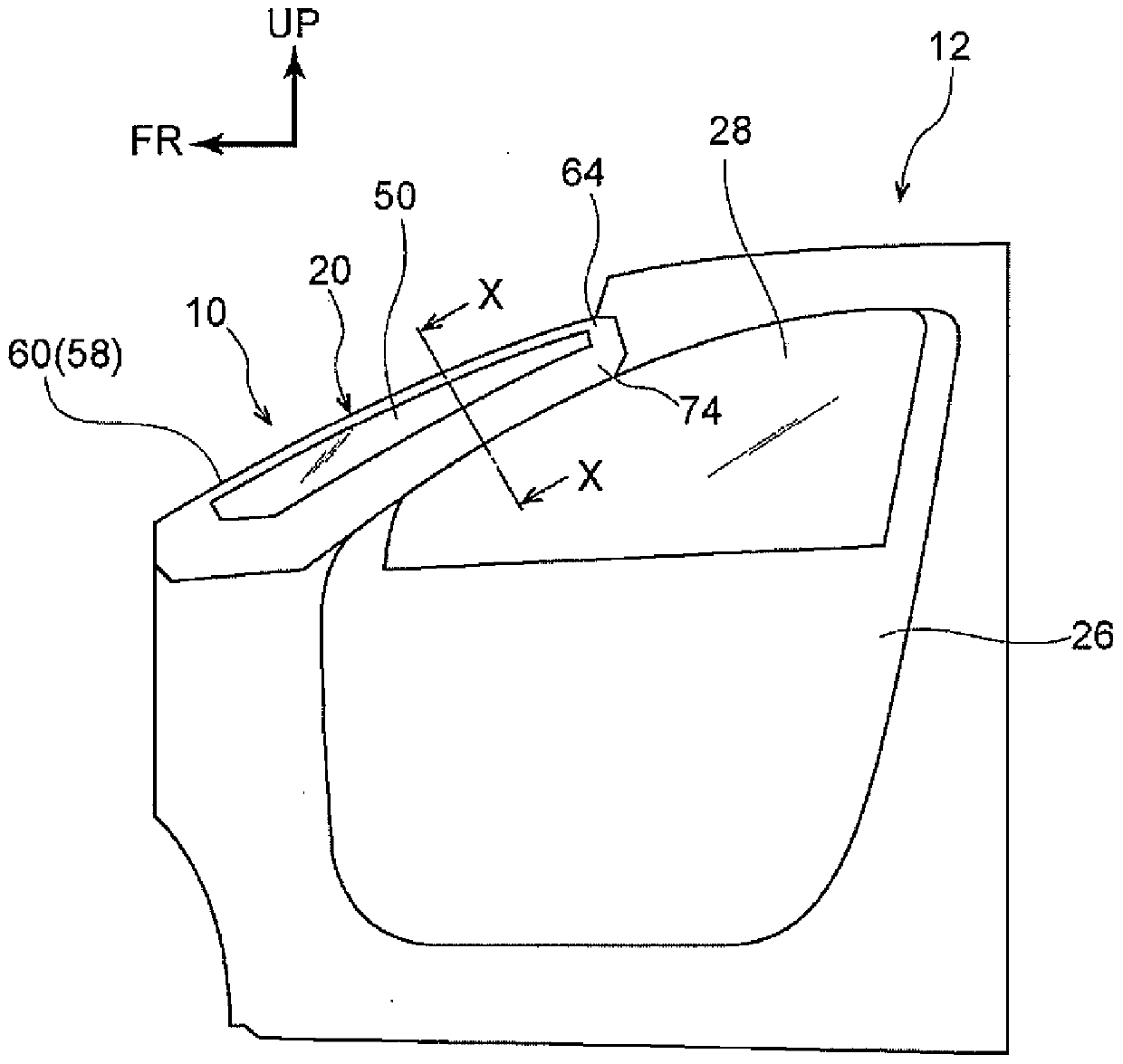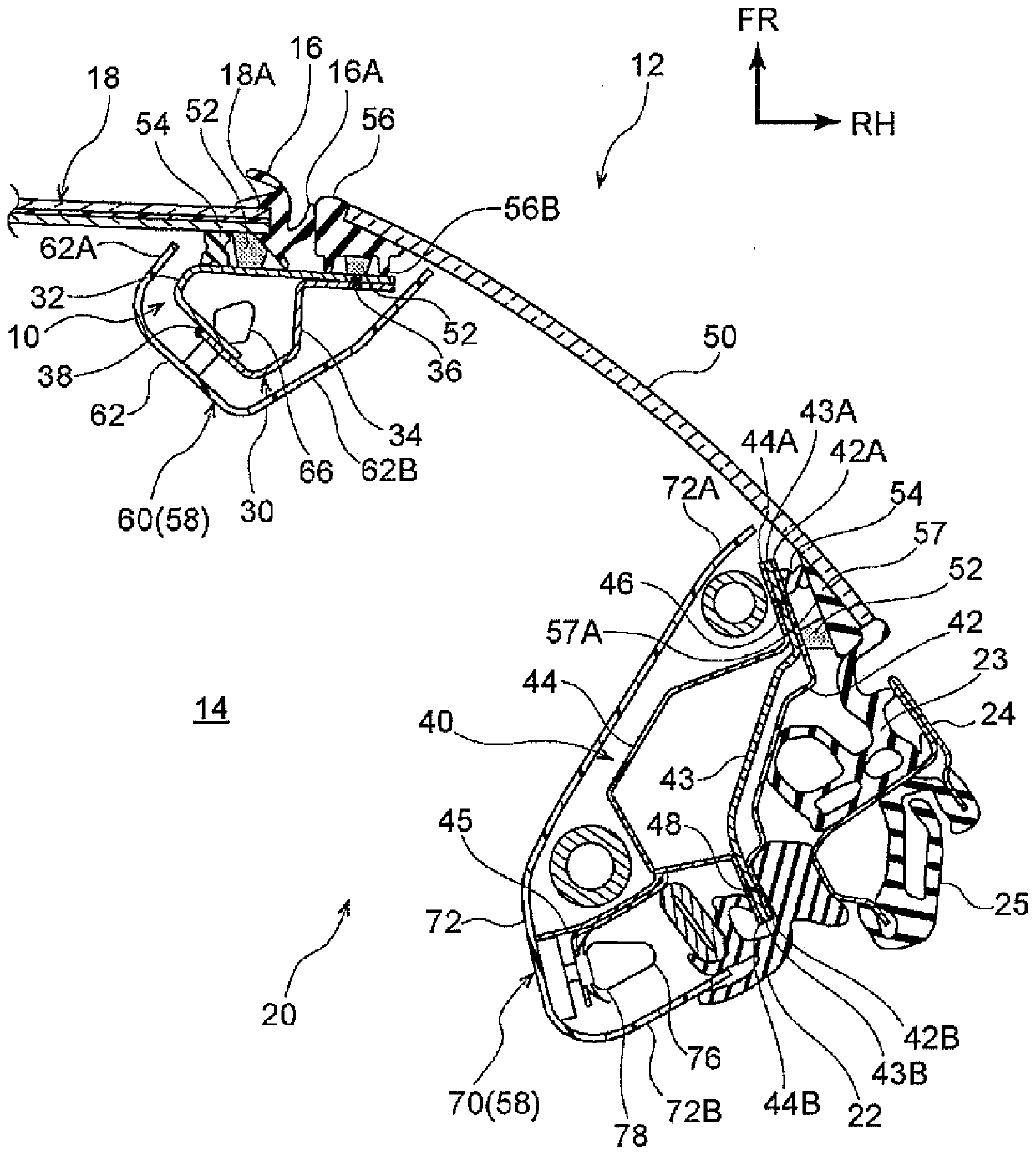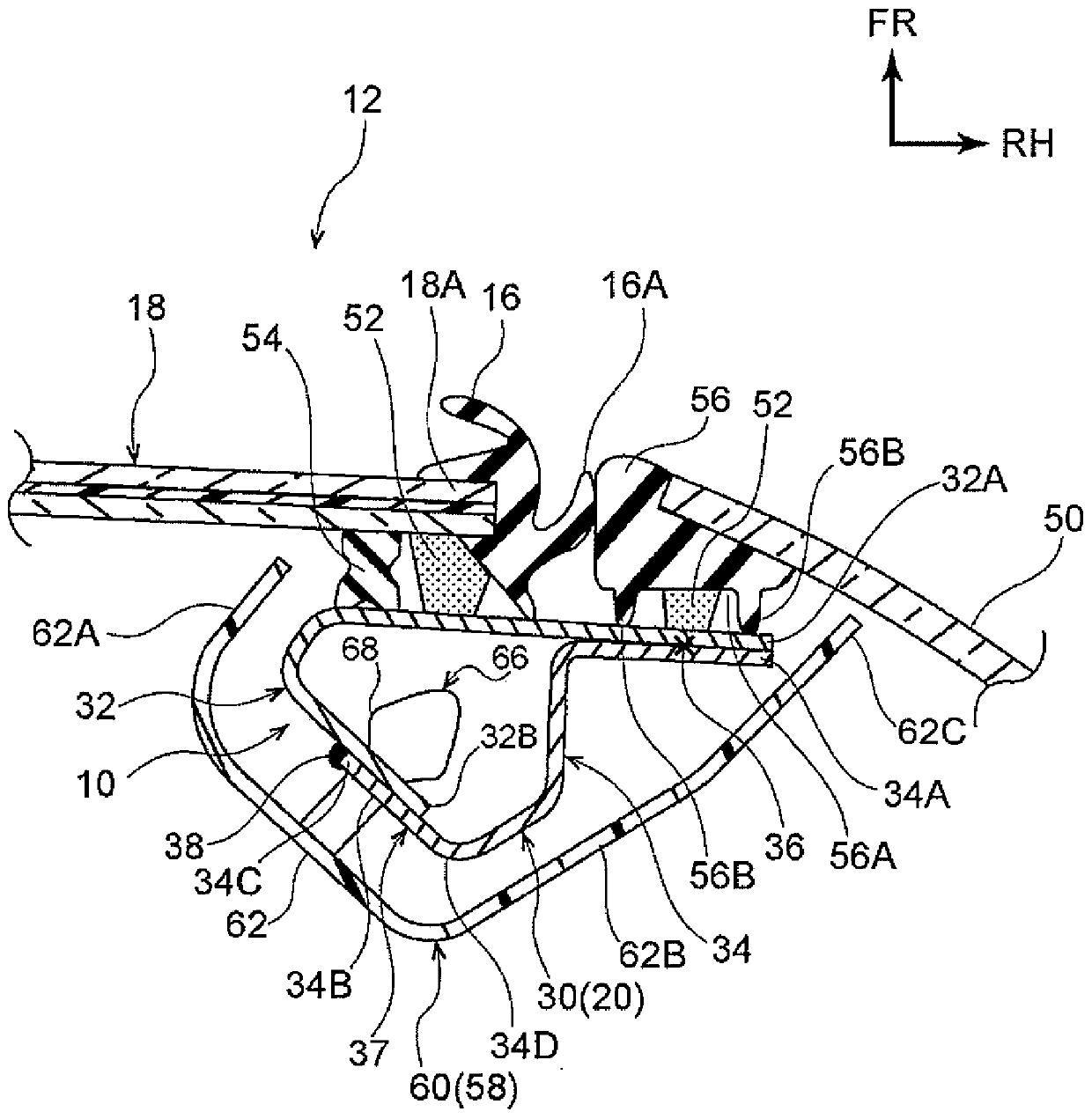Pillar structure for vehicle
A technology for pillars and vehicles, which is applied to vehicle parts, superstructures, subassemblies of superstructures, etc., to achieve the effect of saving assembly space and promoting narrow width
- Summary
- Abstract
- Description
- Claims
- Application Information
AI Technical Summary
Problems solved by technology
Method used
Image
Examples
Embodiment Construction
[0025] Hereinafter, embodiments of the present invention will be described in detail based on the drawings. In addition, for convenience of description, the arrow UP shown suitably in each figure is a vehicle upward direction, the arrow FR is a vehicle front direction, and the arrow RH is a vehicle right direction. Therefore, when the directions of up and down, front and rear, and left and right are described in the following description without particular explanation, they mean up and down in the vehicle up and down direction, front and rear in the vehicle front and rear direction, and left and right in the vehicle left and right direction (vehicle width direction).
[0026] Such as figure 2 As shown, the vehicle 12 is provided with a windshield glass (hereinafter referred to as "windshield") 18 that inclines toward the vehicle rear side as it goes toward the upper side of the vehicle and separates the inner side of the vehicle interior 14 from the outer side of the vehicle ...
PUM
 Login to View More
Login to View More Abstract
Description
Claims
Application Information
 Login to View More
Login to View More - R&D
- Intellectual Property
- Life Sciences
- Materials
- Tech Scout
- Unparalleled Data Quality
- Higher Quality Content
- 60% Fewer Hallucinations
Browse by: Latest US Patents, China's latest patents, Technical Efficacy Thesaurus, Application Domain, Technology Topic, Popular Technical Reports.
© 2025 PatSnap. All rights reserved.Legal|Privacy policy|Modern Slavery Act Transparency Statement|Sitemap|About US| Contact US: help@patsnap.com



